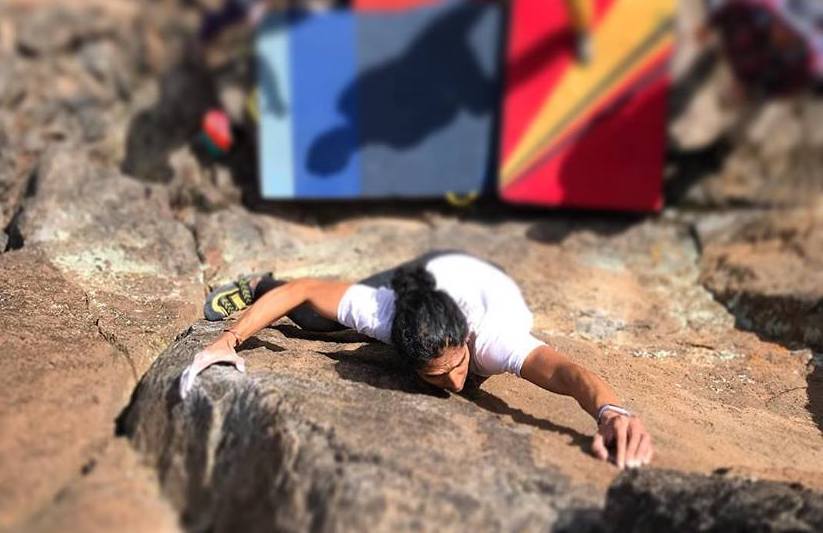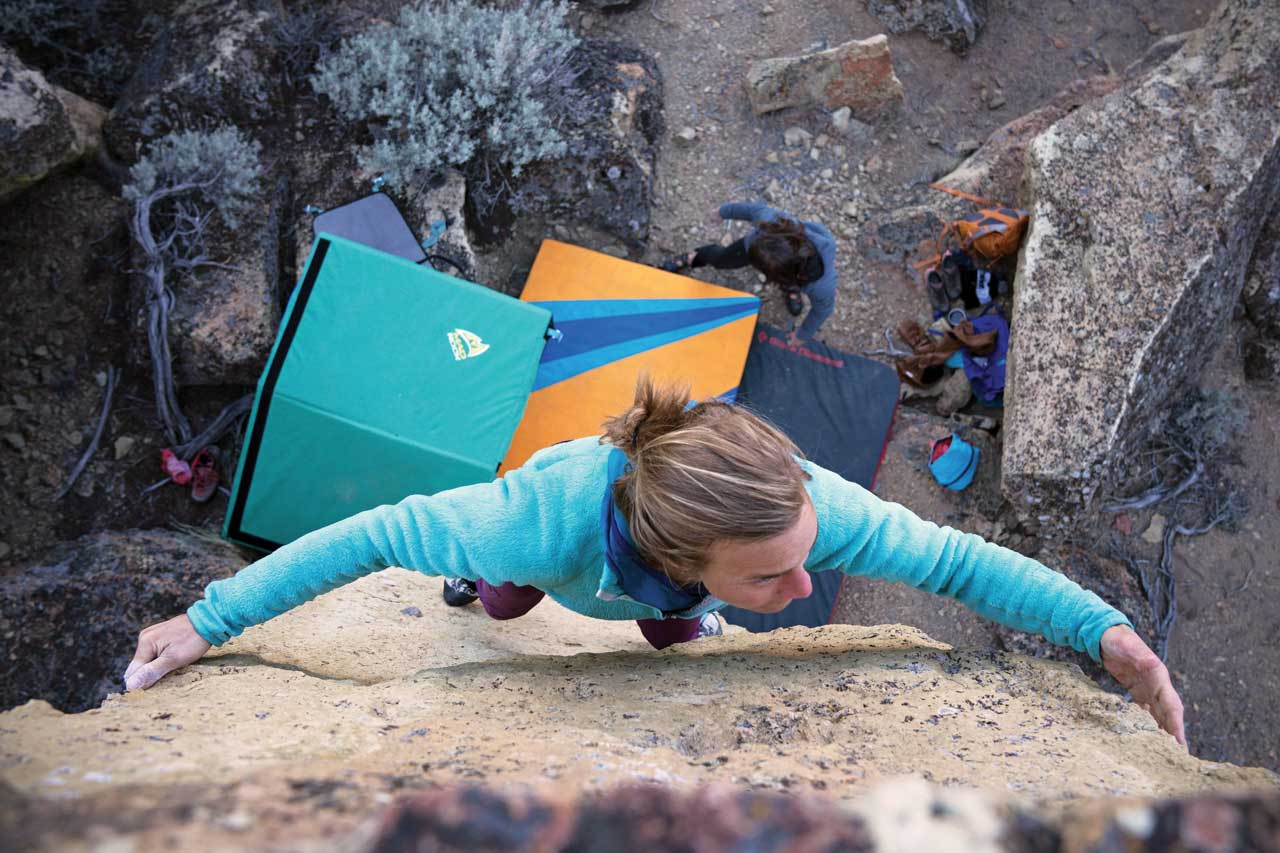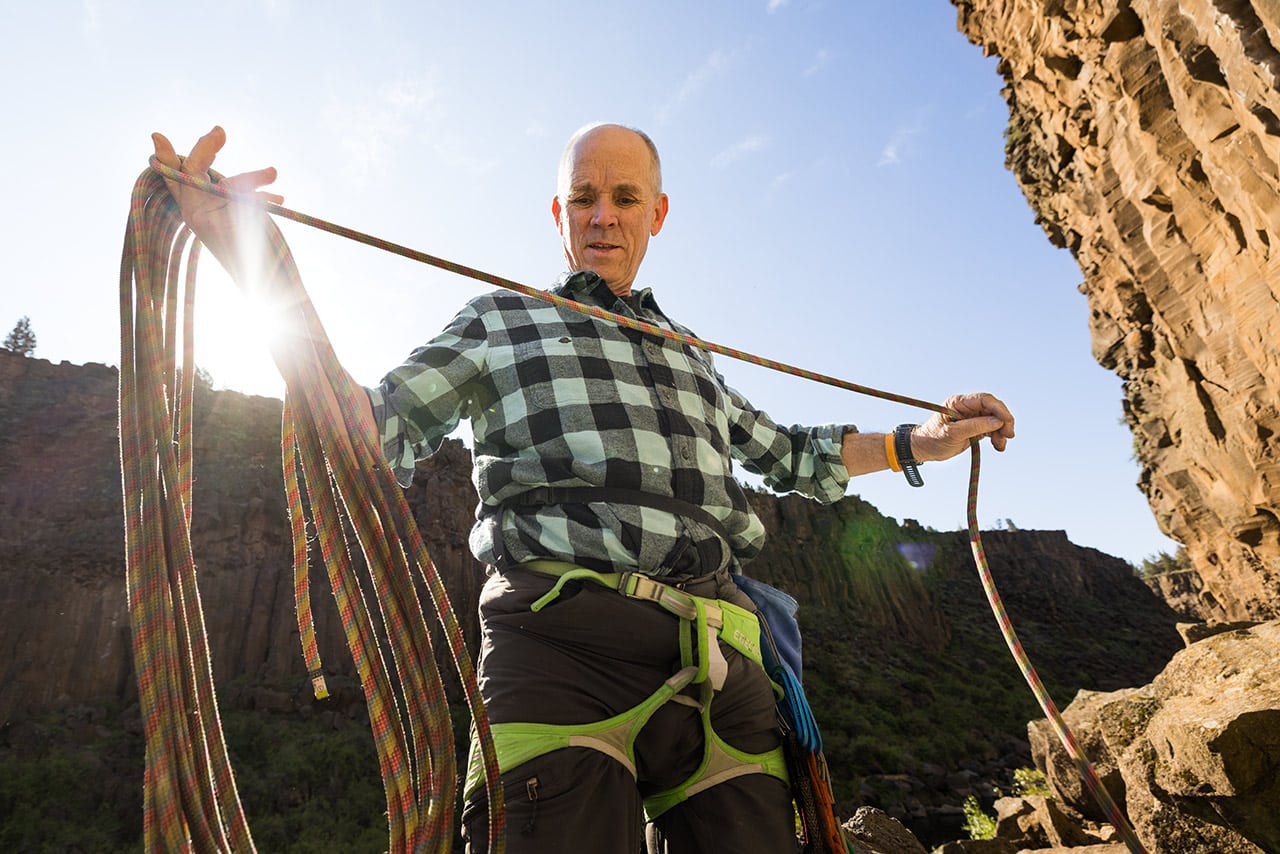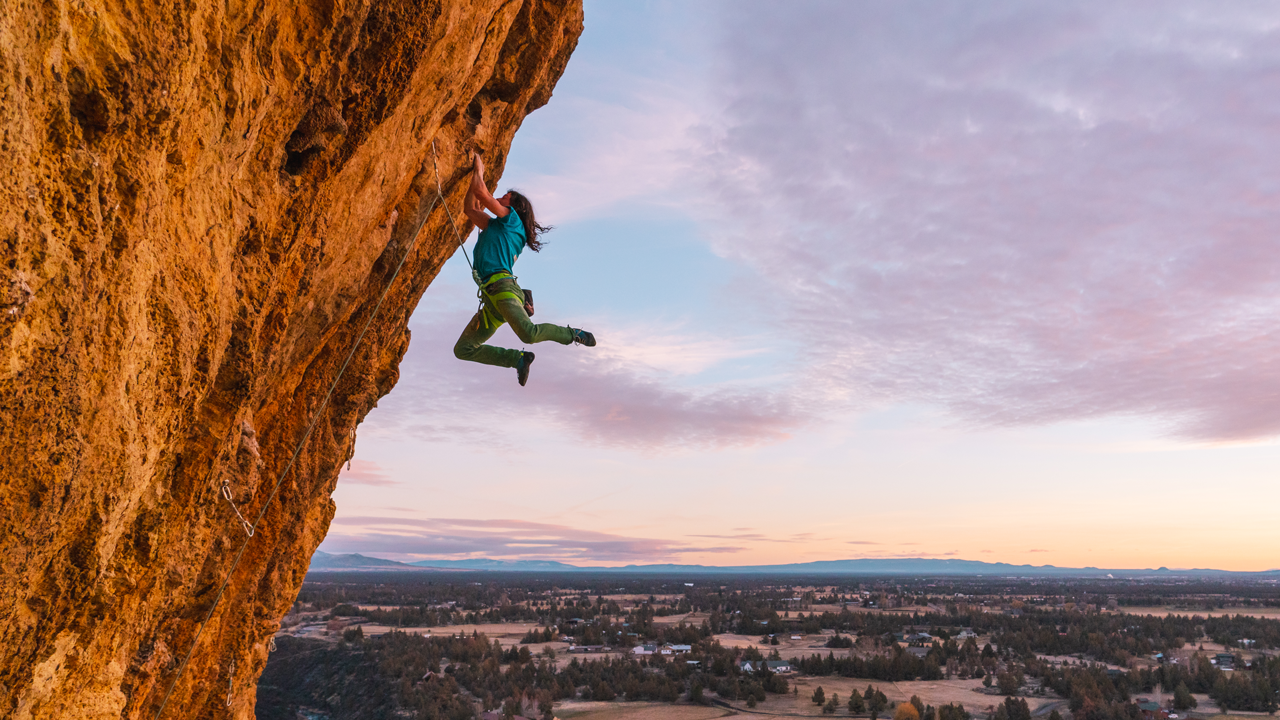Author Jason Chinchen aims to unify the Central Oregon bouldering community with his new guidebook and the High Desert Climbers Alliance. [Photo of Maitreya Sriram climbs “Bulletproof,” a V5 at Widgi Boulders. Courtesy of Central Oregon Bouldering.]
Bouldering is a style of climbing on smaller rock formations and uses “crash pads” as protection instead of ropes or harnesses. It started out as a means to warm-up and practice for rope climbing. Over time, however, with the spread of gyms, competitions and media coverage, it has evolved into its own subcategory of climbing. While climbers have been enjoying this sport in Central Oregon for decades, up until last year, information about Central Oregon’s many bouldering spots spread through word of mouth from climber to climber.
Last fall, Jason Chinchen, a man of many trades including woodworking and graphic design, authored and designed Central Oregon Bouldering, the first guidebook for Bend’s bouldering areas. The book has more than 1,200 climbing routes or “problems” at ten areas near the Deschutes River Trail and off Cascade Lakes Scenic Byway.
Chinchen has lived in Bend intermittently since the ’90s, originally moving to Central Oregon to climb at Smith Rock. Over the years, he has also lived in Bishop, California, the epicenter for bouldering in the United States. There, the climbing community rallies around the sport and has a developed guidebook with more than 2,300 routes. Upon returning to Bend, Chinchen found the outdoor climbing community here underdeveloped.
“When I came back here, the climbing community was really focused around the climbing gym and around Smith Rock, and there were very few people bouldering,” said Chinchen. “I tried to find people to go out and climb with me, but I had a really hard time.”
When word got out about the book being published, there was some pushback. Local climbers argued that the book would bring more traffic, increasing risk of misuse and expose spots that had formerly been well-kept secrets. Alan Watts, the developer of many Smith Rock routes and the author of the Smith Rock climbing guidebook, explained this dilemma in the foreword of Chinchen’s book.
“Bouldering in Central Oregon has long been shrouded in mystery, a closely held secret protected by tight-lipped locals,” said Watts. “Guidebooks are a paradox. On the one hand, there’s little question that they bring far more people into areas to climb once enjoyed by a privileged few. But on the other hand, the influx of people sparks development and brings fresh blood and energy to scenes that might otherwise grow stagnant.”
Mike Rougeux, the Climbing Program Director at Bend Endurance Academy (BEA), argued that the book continues the tradition of passing information down between climbing groups but in a different format.
“Either someone was going to write a guidebook for the bouldering in Bend and it would be someone that wasn’t from Bend or someone who was a part of the climbing community,” said Rougeux. “I think it was better that it was someone who was part of the community.”
Rougeux said that the book has solidified and legitimized this outdoor sport in Central Oregon and established boulderers as actual user groups. These areas have seen more traffic recently, not just because of the book but because of the growth of Bend. The book includes ten areas, so instead of climbers being concentrated at a few of the more well-known spots, it actually spreads them out.
After publishing his book, Chinchen helped establish the High Desert Climbers Alliance (HDCA), a nonprofit dedicated to working with land managers to protect these areas and mitigate any problems caused by increased traffic. Newly formed, HDCA has taken on the responsibility of protecting all rope climbing and bouldering in Central Oregon aside from Smith Rock, which has its own organization.
HDCA is now working with the Forest Service and has coordinated trail work plans at Meadow Camp, an area along the river with both rope climbing and bouldering. Rougeux is one of HDCA’s four officers, in addition to working with BEA. He is currently working with Central Oregon Trail Alliance (COTA) on the mountain bike trail being rerouted through the Widgi Boulders, near the Widgi Creek Golf Club.
“The biggest thing for us right now is putting the pieces in place for the continued growth of the sport and the growth of Bend,” said Rougeux. “We are trying to make sure climbers are represented in the community.”
Both the book and HDCA were created to bridge divides in the community.
“When you have a community that’s unified, we can get things done,” said Chinchen. “I think that my part has been done to give a central view and something for the community to gather around.”
Chinchen distributed the book throughout the Pacific Northwest in local outdoors shop and climbing gyms. It can be purchased in Central Oregon at Bend Rock Gym, Mountain Supply, Dudley’s Bookshop Cafe and Redpoint Climbers Supply.
Read more Central Oregon CLIMBING articles here.





